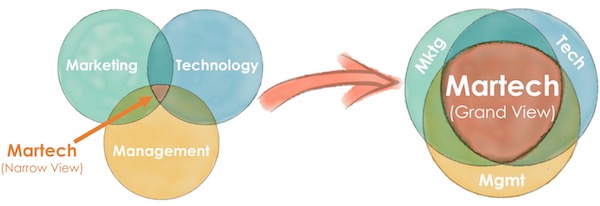Takeaways from MarTech Boston 2017
Looking back at the recent MarTech conference at Hynes Convention Center in Boston, this blog showcases 3 key takeaways that stand out from the two-day event.
 The first day of MarTech Boston started with a session titled “Avoiding the Horrors of Modern Day Marketing,” which detailed some of the struggles marketers currently face. They typically wear many hats. They’re stretched thin. Some feel undervalued (no, really — 47% of marketers say their biggest challenge is gaining the respect of internal clients). They’re constantly being challenged – by bosses, clients, and the ever-changing market.
The first day of MarTech Boston started with a session titled “Avoiding the Horrors of Modern Day Marketing,” which detailed some of the struggles marketers currently face. They typically wear many hats. They’re stretched thin. Some feel undervalued (no, really — 47% of marketers say their biggest challenge is gaining the respect of internal clients). They’re constantly being challenged – by bosses, clients, and the ever-changing market.
As a marketer myself, I can certainly relate. But over the next two days as I listened to martech leaders and practitioners present about their experiences, learnings and future plans, I wasn’t “horrified,” I was excited.
The marketing technology landscape has grown 40% in the last year alone. There will always be new technology and solutions to master, new channels to navigate and new trends to adapt to. But that’s what makes the current state of marketing so exciting.
Following are 3 key considerations for managing MarTech to drive successful outcomes for your marketing organization.
#1 – Working in silos (still) doesn’t work
We’ve all heard it before – working in silos doesn’t work, and with the rise of martech, that’s truer now than ever before. In Scott Brinker’s “Martech Manifesto,” he explains how marketing, technology and management have been long treated as three different disciplines, but digital transformation is disrupting that school of thought.
He goes on to explain the difference between the “narrow view” and “grand view” of martech, with the narrow view showing little overlap between disciplines, while the grand view showing them as “inseparable.” The grand view provides the vision for the MarTech conference:

The notion of breaking down departmental barriers was a common theme throughout multiple sessions. For example, Neenu Sharma, VP of Product and Marketing Operations at GE Digital, explained that in order to successfully grow and hit revenue targets, many departments needed to be partnered and aligned, from marketing, IT and the C-Suite to customer success and finance. As the adoption of the “grand view” of martech continues to grow, this practice will become increasingly important for success.
# 2 – Integration is imperative
Much like departments must become more integrated and ingrained with one another, so do tech products and solutions. As seen in visual representations of both B2B and B2C martech stacks, the number and layers of technologies utilized is all over the map. However, it’s not so much about the quantity, but how well everything integrates to provide a full picture of the buyer’s journey.
Kyle Duford, Global Vice President of Digital & eCommerce at Dr. Martens, showed a visual progression of Dr. Martens’ martech stack, first showing all products, then the six categories all products roll up to, and finally, how they all work together: through a customer data platform. Through this view, Dr. Martens’ is able to understand their customers via comprehensive profiles, and use the insight to customize offers and advertisements.
As the martech landscape continues to grow and more and more options become available, businesses will have to take a hard look at what works well together rather than just “best in class” solutions.
#3 – Personalization, personalization and more personalization
Perhaps the most prevalent theme throughout all sessions at MarTech Boston was personalization. To see the most success, you must reach the right prospect at the right place at the right time, and you must listen to what your customers tell you through all stages of their journey.
We know that personalized CTAs perform better than non-personalized, and nearly two-thirds of customers get frustrated when website content isn’t personalized. Through those statistics and more, it has become abundantly clear that understanding our customers inside and out will enable us to win more.
However, it’s important to remember it’s not just about what we know about our customers and target market. What are our customers doing when they aren’t spending their time with us? Leveraging outside intent data takes personalization to the next level.
At TechTarget, our purchase intent solution, Priority Engine, helps B2B technology companies better understand what subset of their target market is in market right now, as well as what specific topics and vendors they are researching (and more). This insight is extremely compelling when creating targeted marketing campaigns, as it provides another layer of data to consider in personalization.
No matter what technology solutions you use, it comes down to creating positive customer experiences through personalization. We have access to more insight on our customers now than ever before – it’s up to us to use it effectively.
To learn more about intent data and TechTarget’s Priority Engine, visit TechTarget.com/Priority-Engine.




